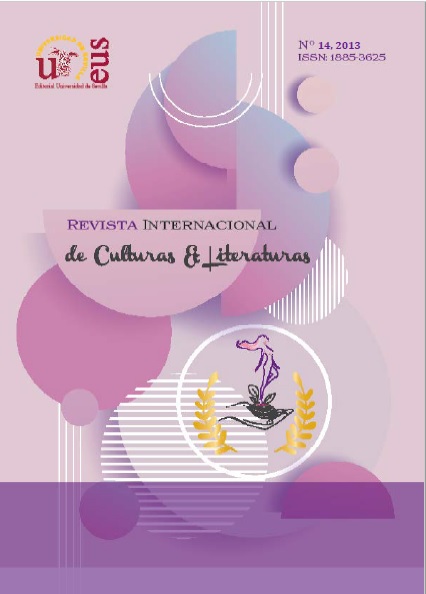WATER AND THE ETERNAL FEMALE: A STUDY OF CIRCE AND THE POET MANUEL CIGES APARICIO ACCORDING TO THE THEORIES OF GASTON BACHELARD
DOI:
https://doi.org/10.12795/RICL.2013.i14.01Keywords:
Manuel Ciges Aparicio, Eterno Femenino, Gaston Bachelard, Circe y el poetaAbstract
The novel Circe y el poeta, written by the Spanish Manuel Ciges Aparicio and published in 1926, is, as the title suggests, a reinterpretation of the myth of the Greek sorceress. Indeed, Sara –the most prominent female character in the story– is a modern seductress in the manner of Circe (1927) by the German painter George Grosz. This essay aims to demonstrate –based on Gaston Bachelard's theories about the material imagination of water– how Ciges Aparicio uses this element as a symbol of the feminine, of pain and of death.
Downloads
References
Bachelard, G., El agua y los sueños. Ensayo sobre la imaginación de la materia, México, Fondo de Cultura Económica, 2005.
Cansinos Assens, R., Rafael, La nueva literatura, tomo IV, La evolución de la novela (1917-1927), Madrid, Páez, 1927.
Cirlot, J. E., Diccionario de símbolos, Madrid, Siruela, 1997.
Ciges Aparicio, M., Circe y el poeta, Madrid, Siete Mares, 2003.
Ciges Aparicio, M., El libro de la vida trágica. Del cautiverio, edición de Cecilio Alonso, Alicante, Caja de Ahorros de Alicante y Murcia, Instituto de Estudios Juan Gil-Albert, 1985.
Gómez De La Serna, R., Automoribundia (1888-1948), Buenos Aires, Sudamericana, 1948.
Vilarós, T. M., Galdós: invención de la mujer y poética de la sexualidad. Lectura parcial de Fortunata y Jacinta, Madrid, Siglo XXI de España Editores, 1995.
Unamuno, M., San Manuel Bueno, mártir, edición de Mario Valdés, Madrid, Cátedra, 2003, 24º ºedición.

